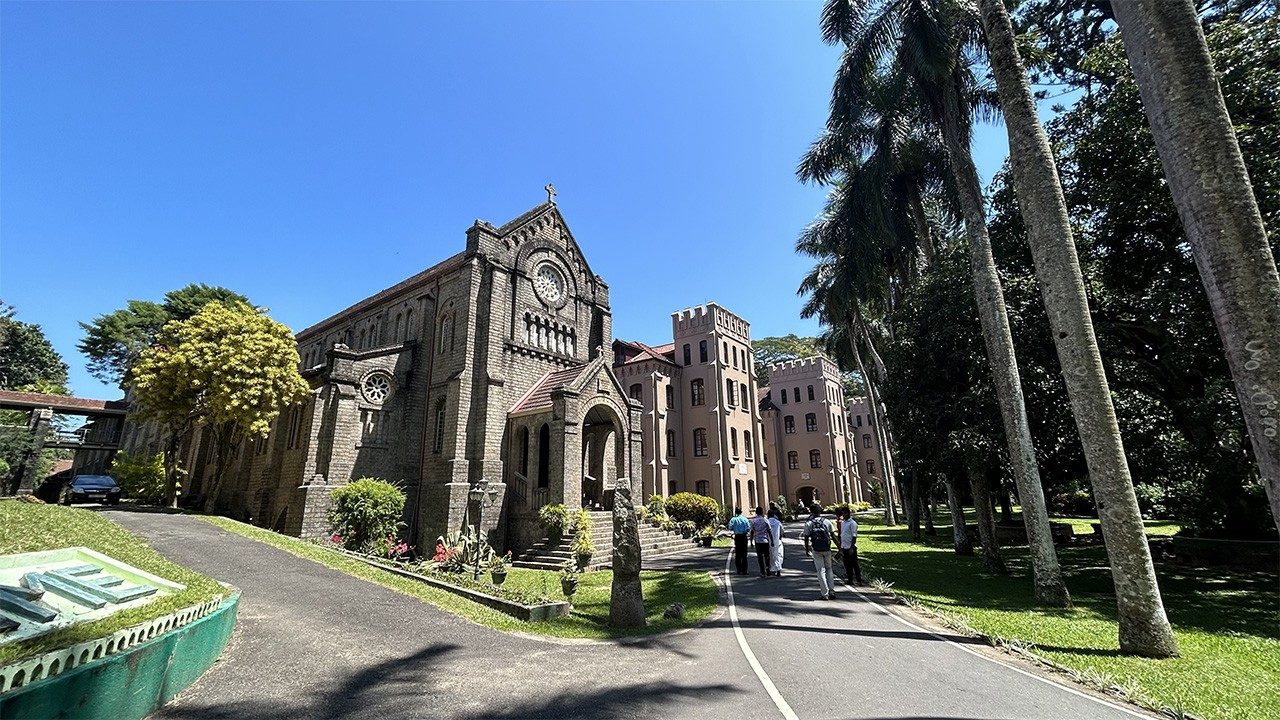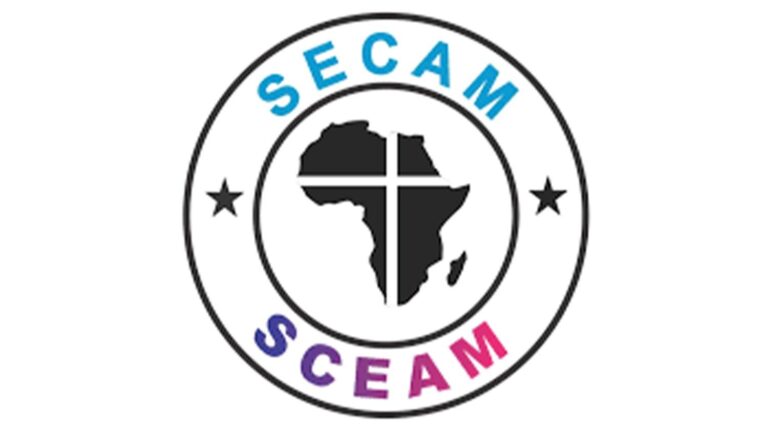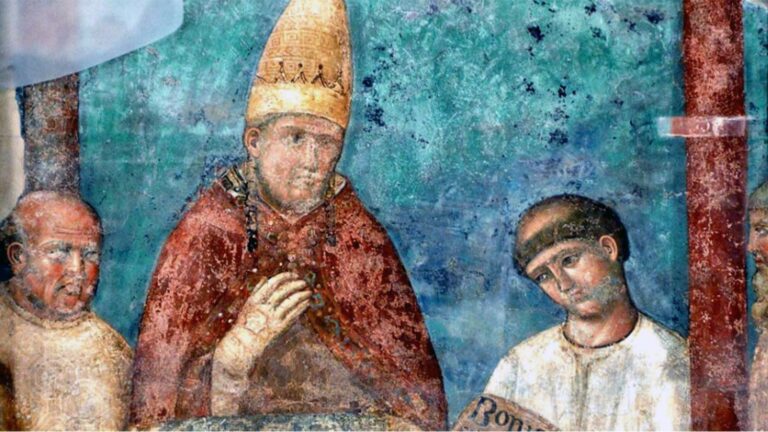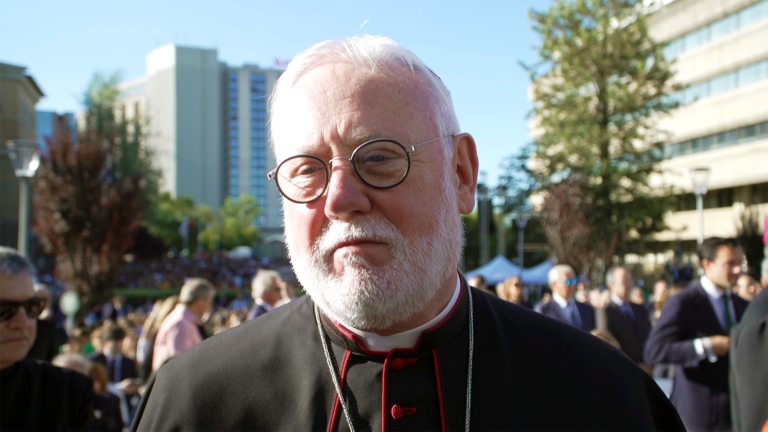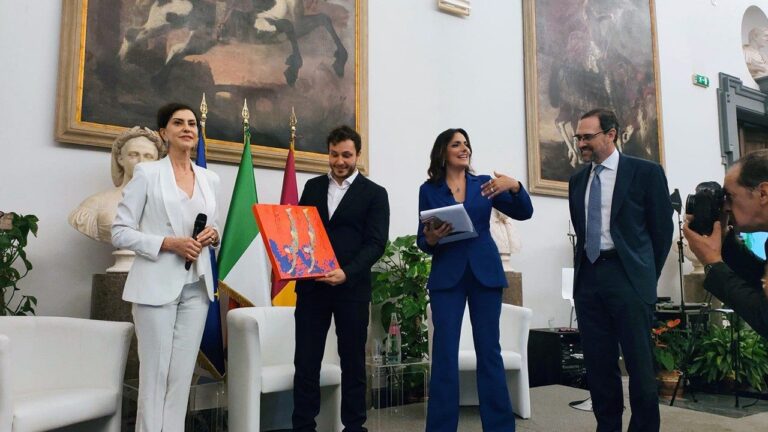The Church in Sri Lanka and the challenge of interreligious dialogue
Vatican news
Here we are at the last episode of our visit to Sri Lanka with the MAGIS Foundation. What emerges is a vital Church, fighting for complete religious freedom and still awaiting answers about the 2019 Easter attacks, while struggling to overcome lingering clericalism within its ranks.
By Antonella Palermo – Negombo (Sri Lanka)
Better understanding the challenge of interreligious dialogue in Sri Lanka was one of the objectives of our trip with the MAGIS Foundation (Jesuit Movement and Action Together for Development), which supports several projects in the Asian nation, particularly in the educational field. These projects (in two villages in the north of the country) also received a visit from a delegation from the Italian Episcopal Conference (CEI) at the beginning of February.
What emerges is the image of a Church which, although vital, is still fighting in certain regions for total religious freedom and awaiting satisfactory responses from political and judicial authorities on the Easter 2019 attacks, while struggling to fully assimilate the synodal spirit by overcoming current clericalism. in its ranks.
We are still waiting for the truth about the Easter attacks
“We are not yet satisfied with the answers they gave us,” said Father. Manjula Niroshan, parish priest of St. Sebastian's Church in Negombo, one of three churches which, during the Easter celebrations of April 21, 2019, suffered a coordinated attack by six suicide bombers, who also targeted three hotels in different towns . The attacks killed 279 people and injured many others. The discontent expressed by the priest is that expressed since the beginning by the Sri Lankan Catholic community, criticizing the government's insufficient investigations and even going so far as to present a petition to the United Nations requesting an international investigation.
The renovation of this place of worship was carried out quickly and now the church, among the forty in the town, appears welcoming and pleasant, although it is constantly monitored by the police. In some cases, entire families were killed on this occasion, specifies the father. Niroshan says in other cases, only the parents remained alive.
“Many survivors are wary because they are alone at home, others are afraid of the future, they have no hope because perhaps their only child is gone, but faith helps them,” says -he. They try to manage their daily life still with certain difficulties, but with the help of counselors and social assistance, they feel taken care of and have overcome the trauma.” The priest explained that the ecclesial community has demonstrated 'constant proximity.
The Church's support for victims
The Saint-Sébastien parish has around two thousand Catholic families. Fr Niroshan says the survivors were helped to rebuild some houses, get financial support to start business activities and raise funds for those who suffered permanent injuries. “We helped them by paying the bills and medical expenses. People accepted what happened, to a certain point – says the priest – but it is not easy
He explained that the tragedy does not seem to have affected relations with other religious communities, which are generally good. “There is a lot of collaboration and we also work with representatives of other faiths. After all, Sri Lanka has a multitude of religions. In the case of the Easter attacks, some wanted to provoke a reaction from us, but thanks to our Church leaders, we have not authorized any form of retaliation.”
The commitment of the Sri Lankan Catholic community to fraternity and dialogue
“Indeed, five years after these events, we are not afraid to live in this country because we are accepted by the people,” confirmed the rector of the national seminary, a beautiful English-style structure founded by the Company of Jesus, then died to the Oblates and currently belonging to the Church of Sri Lanka.
Father Quintus Fernando SJ explains that Christians understand that the attacks were not religiously motivated, but had a political motive “to sow religious hatred. We need politicians who love the people, who love the nation and who love the country”, declared the Jesuit, confirming that there is mutual respect and fraternity between the different religious communities.
“There are no tensions with the Buddhist majority, not even with Hindus and Muslims,” although some problems arose when Wahhabi schools radicalized Islam.
Fr Fernando further explained that aggressive proselytizing by evangelicals has had a detrimental impact on how Christians are perceived by members of other faiths.
The path to full religious freedom
During his apostolic trip to Sri Lanka in January 2015, Pope Francis lamented that the men and women of that country had been victims for too many years of civil strife and violence and called for healing and healing. 'unit. : “I hope – he said – that interreligious and ecumenical collaboration will demonstrate that, to live in harmony with their brothers and sisters, men and women must not forget their own identity, whether ethnic or religious.
Today, Most Reverend Jude Nishantha Silva, Bishop of Badulla, speaks about the great responsibility that religious leaders have in creating a climate of peace in Sri Lanka. The bishop goes so far as to say that the political agenda lacks interest in truly shedding light on what is behind the brutal attacks of 2019. “We need interfaith dialogue and relationships with other religions , but it seems to me that only Catholics care, maybe they really want it.”
Bishop Silva said he could not rule out that something similar to what happened five years ago could happen again in the future. “There are risks,” he said. He also lamented the fact that as a minority, it is not so easy to build a church and get land to do so. “In my diocese alone, we have been trying to obtain land for almost 15 years just to build a small chapel. It is a neighborhood where around thirty families live. We have discussed the project on several occasions, even with different ministers, but they still can't make a decision. It's pathetic.
Defeat clericalism
Despite its openness to interfaith dialogue, the Sri Lankan Church faces various forms of “closure” within its ranks. This aspect was highlighted by several Jesuits in the country who noted that, especially in certain northern regions, the old caste system still conditions the pastoral work of the Church.
Sister Patricia Lemus, a Comboni Sister from Guatemala, who has been in Hatton for four and a half years, is a collaborator of the Loyola Center. She mentioned certain issues rooted in local culture that hinder the construction of a Church in which laity and religious actively collaborate in mutual exchanges.
She does not hide her discomfort at living in an ecclesial context that is “too hierarchical” in which the laity have no place, and are not even authorized to distribute communion to the faithful at mass. “As far as being a synodal Church is concerned, we are still a little behind the times here, in fact this is one of our struggles: how to find collaboration. There is still the weight of a pyramidal structure, with too much clericalism,” she said. “We hope that, little by little, by coming together “Nuns from four different continents can sow a seed. We still often see that they do not mix, there are congregations made up either only of Sinhalese or only of Tamils,” she added.
Sister Patricia praised Ignatian spirituality which helps to live an authentically missionary style. “I would like everyone to listen to the voice of Pope Francis for a more open and free Church,” she said. For example, I really like this center because the majority is Hindu and ultimately we are looking for the same God. under different forms. »
The prophetic role of the Tulana Center
This openness, on which the Document on Human Fraternity so insists, is at the heart of the theological reflection of the Sri Lankan Jesuit Aloysius Pieris, founder in 1974 of the Tulana Research Center for Encounter and Dialogue, in Kelaniya, near Colombo, which he still runs.
The energetic ninety-year-old priest lives in this sort of oasis where valuable works of art, mainly contemporary art sculptures with sacred themes, are exhibited in the middle of dense vegetation.
Born as a place of retreat for the religious of the Society of Jesus, the Tulana Center has been strongly characterized over the years as a space for Buddhist-Christian interreligious dialogue. It even hosted “dissident” Buddhist monks at the time of the civil war, he said.
“The Magisterium of Pope Francis has renewed the enthusiasm I had after the Council,” he exclaims. “Jesus teaches us friendship that embraces everyone, I hope the Church follows him, Francis.” Father Aloysius' dream is that of a free Asia, free from discrimination and the militarization of faith.
The center is regularly frequented by Ambrogio Bongiovanni, president of MAGIS, who has worked for the Indian subcontinent for more than thirty years.
“Interreligious dialogue has as its primary objective that of seeking God and stimulating transformative social action, but always referring to the transcendent dimension. In the West – he underlined – dialogue certainly takes on significant importance because pluralism is knocking on our doors, but we sometimes run the risk of reducing it to a purely social experience, or even to a purely political experience.”
Thanks to the MAGIS project sponsored by the Italian Agency for International Cooperation, which is taking off in Sri Lanka, all the precious documentation preserved on this prophetic reality of the country will find its place in a renovated building and made usable again by academics and experts. . This will be an opportunity for improvement for those who wish to refocus on the most authentic origins of interreligious dialogue in favor of reconciliation.
Vatican news
sc
